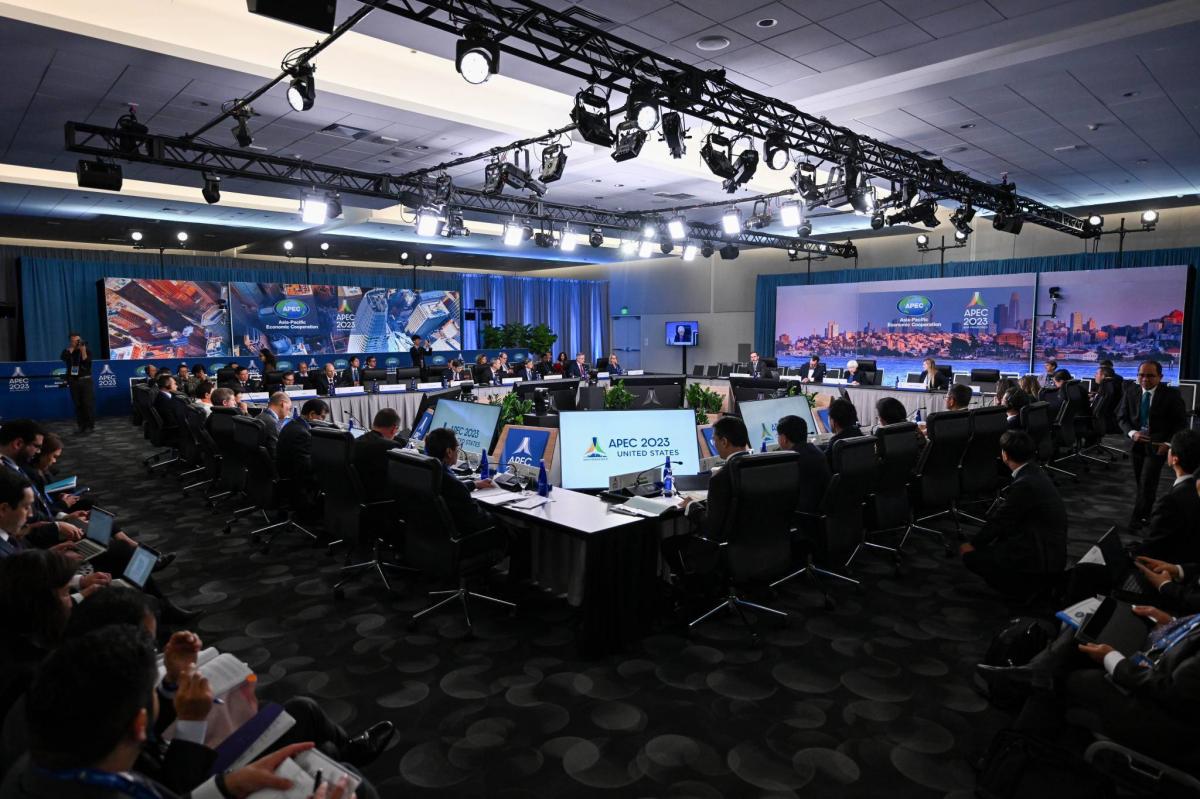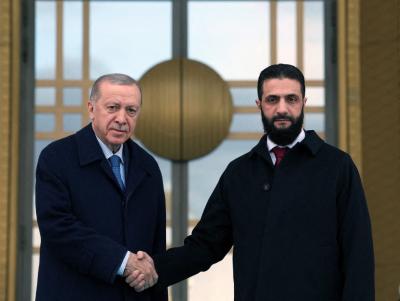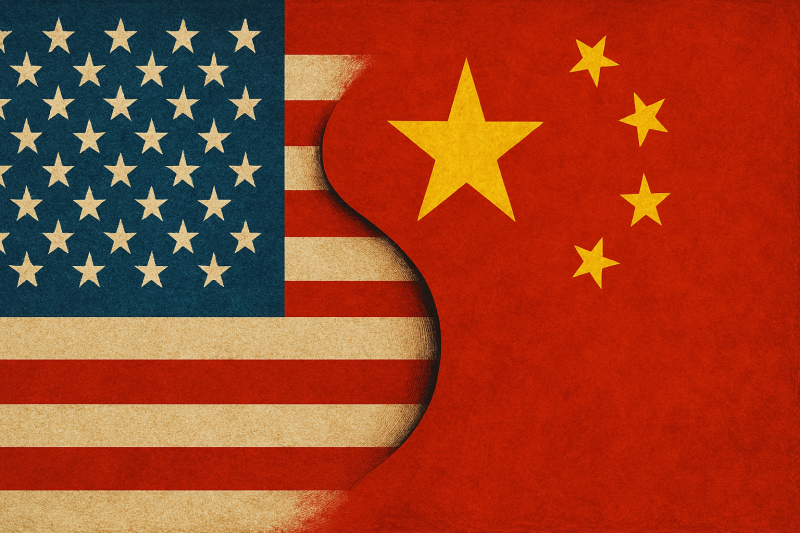The expansion of China's growing global influence since the beginning of the 21st century represents a major challenge for the United States.
The high-level meeting between U.S. President Joe Biden and Chinese President Xi Jinping in San Francisco, California, on the sidelines of the Asia-Pacific Economic Cooperation (APEC) summit, marked a crucial turning point after months of heightened tensions. These tensions have severely shaken the relations between the two global economic giants, reaching a level of strain rarely seen since the 1970s and their historic rapprochement.
However, this meeting does not in any way presage an imminent resolution of the deep disputes between the United States and China. These differences range from technological issues such as semiconductors and artificial intelligence, to conflicts involving sector giants like Huawei and TikTok, through the 'trade war,' and major environmental challenges, including climate change. They also encompass tensions related to sensitive areas such as Taiwan, the Pacific and Indian Ocean regions, not to mention the hotbeds of international crises from Ukraine to Gaza.
Despite the perception of China as 'the greatest strategic challenge' for the United States in the coming years, this view does not erase the reality of their economic interdependence. It forces them to moderate their ambitions in this 'fierce competition,' thus avoiding a total rupture. A dynamic that is distinctly different from that experienced between the United States and the Soviet Union during the Cold War.
The two giants are engaged in a particular form of 'cold war.' Indeed, on the tenth anniversary of the Chinese initiative 'Belt and Road,' President Xi Jinping emphasized the magnitude of this vision. This initiative constitutes a soft power strategy, catapulting China's influence globally through massive investments in infrastructure. This deployment includes ports, airports, bridges, railways, and economic corridors connecting nearly 60 countries, as well as massive injections of funds into strategic sectors such as oil, gas, electricity, and the internet.
The expansion of China's growing global influence since the beginning of the 21st century represents a major challenge for the United States. Since the Obama administration, a strategy of focusing American efforts in Asia has been adopted to contain China's rise, a move that goes beyond mere economic issues to also include military aspects.
This strategy has notably seen five of America's eleven aircraft carriers deployed in the Pacific and Indian Oceans, accompanied by the deployment of advanced missile systems like the Patriot and THAAD in this strategic region.
The U.S. military's pivot to Asia has come at the expense of the Middle East and Europe, even before the outbreak of major conflicts in Ukraine in 2022 and Gaza in 2023. Under the administration of Donald Trump, a 'trade war' erupted following high customs duties imposed on Chinese imports, a move that directly impacted American companies operating in China.
Under President Joe Biden, the dynamics intensified with a series of military agreements between Washington and Asian countries sharing similar concerns about China's rise. This also revived the 'Quad' alliance comprising the United States, India, Japan, and Australia, in addition to the establishment of the 'AUKUS' security agreement between the United States, the United Kingdom, and Australia. The first mission of the British aircraft carrier 'HMS Queen Elizabeth,' launched the previous year, was oriented towards the Pacific.
However, the issue of Taiwan remains a major and unique source of concern. Since the normalization of Sino-American relations in the 1970s, this self-governing island has become a central point in the relationship between Washington and Beijing. Successive U.S. administrations have adopted a 'One China' policy, implying the withdrawal of recognition of Taiwan as an independent state, while maintaining a vague position on the U.S. response in the event of a Chinese attack on the island.
Under the Biden administration, a major shift marked U.S. policy towards Taiwan, breaking with past practices by declaring a clear defensive position in case of a Chinese attack on the island. This stance was perceived as a crucial turnaround by Beijing, hinting at a radical change in relations between the two global superpowers.
The intervention of former Speaker of the House Nancy Pelosi also played a significant role in this dynamic. Her visit to Taiwan in August 2022 triggered strong reactions from China, which responded with unusual maneuvers around the island. Tensions escalated after the United States discovered a Chinese balloon over Montana in January of this year, sparking a heated debate thereafter.
The escalation intensified with the visit of Taiwanese President Tsai Ing-wen to the Ronald Reagan Library in California in April, followed by her meeting with former Republican Speaker of the House Kevin McCarthy.
Relations reached a critical level, with an increase in military activities by the United States and China near Taiwan and in the South China Sea. This situation was exacerbated by Beijing's decision to break off military communications with Washington.
In the months following the balloon incident, tensions increased until the visit of U.S. Secretary of State Antony Blinken to Beijing last June, marking the first visit by a U.S. Secretary of State to China in five years. This visit represented a breakthrough, followed by the visit of the U.S. Treasury Secretary, Janet Yellen, in July. While these visits have helped to revive dialogue between the two nations, they have not led to significant progress in fully restoring relations. Faced with Congressional pressures, Biden then imposed restrictions on American companies wishing to invest in advanced technologies in China.
In response to this American action, the Chinese president chose not to attend the G20 summit in New Delhi last September to avoid any encounter with his American counterpart. He took advantage of this to irk China by announcing, on the sidelines of the summit, the creation of a 'major economic corridor' linking India to the Gulf countries, all the way to Israel and Europe, with investments worth tens of billions of dollars, in an apparent strategy to counter the Chinese 'Belt and Road' initiative. Moreover, a year earlier, the G7 had adopted an American initiative injecting tens of billions of dollars into African countries, aiming to counter Chinese investments on the continent. American officials have continually reminded African nations of the risks associated with Chinese loans.
In the current diplomatic landscape, the latest developments between the United States and China, as well as Beijing's subtle maneuvers in the Middle East, have cast a stark light on geopolitical upheavals. These developments have sown tensions, particularly after China's successful efforts last March to restore ties between Saudi Arabia and Iran.
China, seeking to establish a 'grand economic corridor,' has invested considerable energy in this strategy, notably by consolidating strategic economic partnerships with the states of the Gulf Cooperation Council, engaging in major infrastructure construction projects in the United Arab Emirates, and proposing to build a nuclear power plant in Saudi Arabia.
However, this development has not been well received by the United States, which has responded with its own 'grand economic corridor' initiative. In this context, Washington has undertaken measures to facilitate a normalization of relations between Saudi Arabia and Israel, responding to Riyadh's demands, including a security agreement and the construction of a nuclear power plant for peaceful purposes.
Yet, the situation was upended by the explosion in Gaza, calling into question these advancements and casting doubt on the stability of the region.
Today, the meeting between Biden and Xi in San Francisco aims to reestablish a bilateral relational dynamic, as the two superpowers seek to rekindle military contacts in a tense international context, from the Ukrainian crisis to that in Gaza.
It is clear that China and the United States have differing approaches to these conflicts. While Washington has rejected the Chinese initiative to peacefully resolve the Ukrainian crisis, it also opposes a ceasefire in Gaza as well as an international conference aimed at finding a two-state solution.
The Sino-Russian rapprochement raises fundamental concerns, as trade between Beijing and Moscow has reached $200 billion this year, and China is gradually emerging as an alternative energy source to Russia in Europe, diverting Russian oil and gas flows to Chinese and Indian ports.
In this complex web of political differences and divergent strategies, the crucial question remains: Will Biden accept Xi's call for 'cooperation' to face global challenges, offering an alternative to ideological perceptions and encouraging a pragmatic view of international relations?
 French
French















